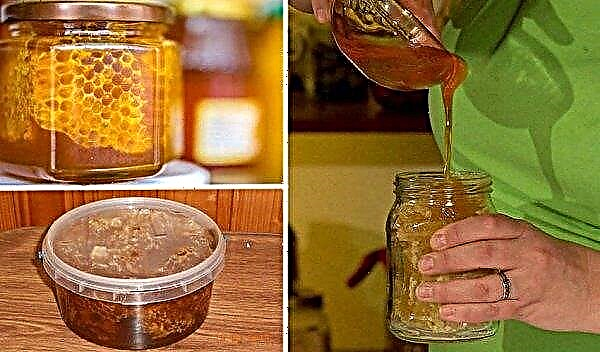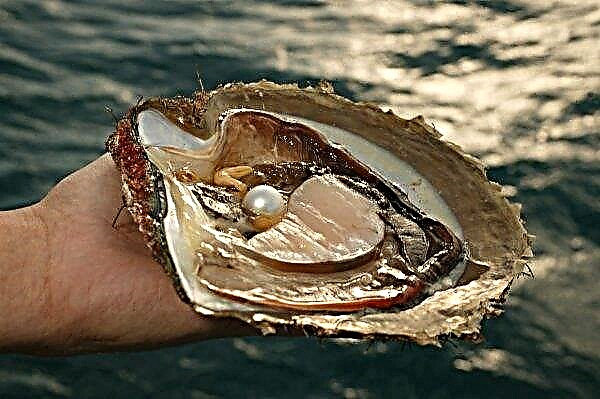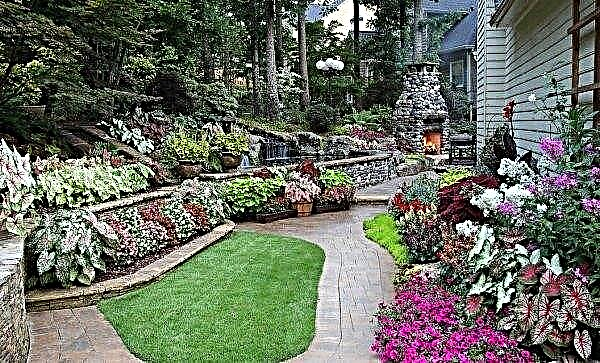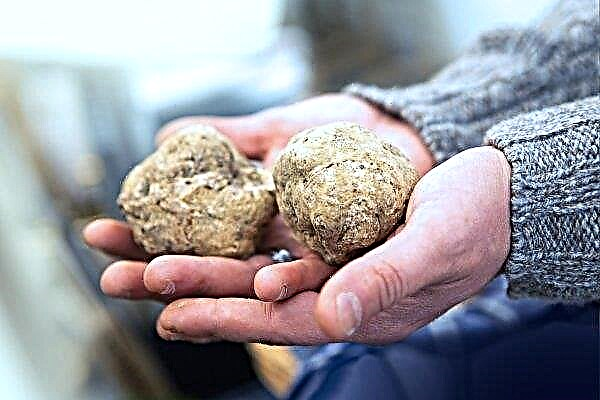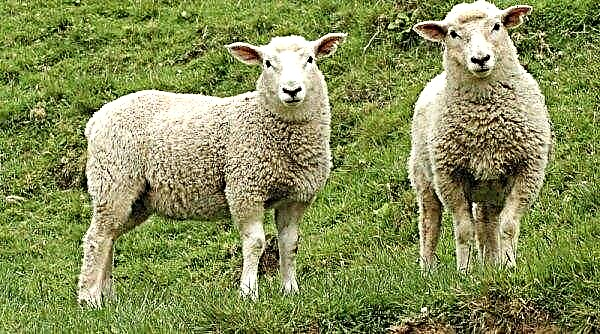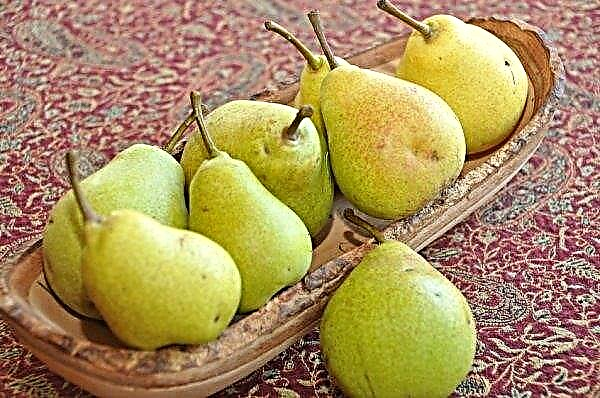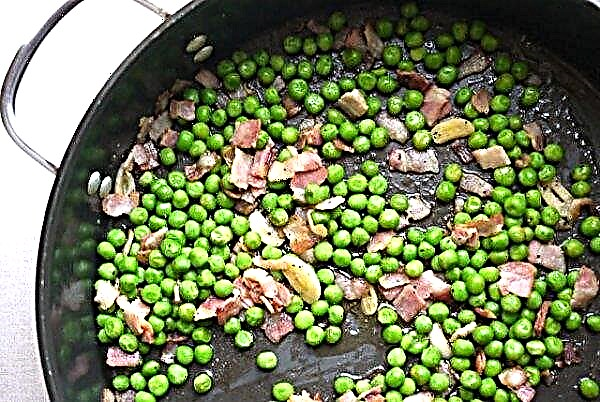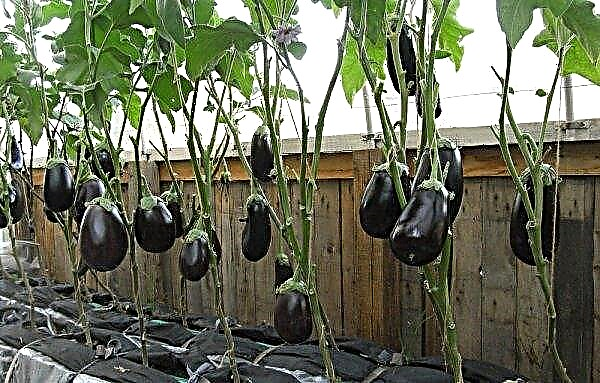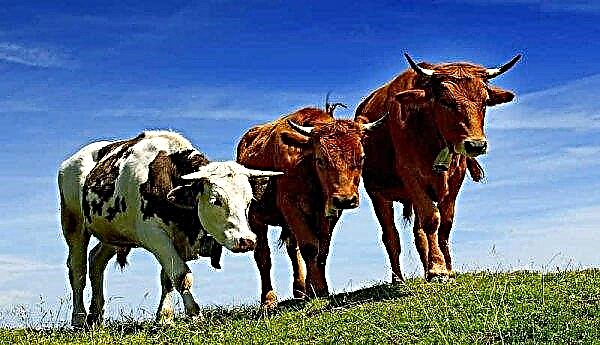Sometimes in garden plots you can find decorative varieties of conifers, one of which is Glauka Pendula spruce. It reproduces exclusively by vaccination and is characterized by a drooping crown, consisting of sharp and dense needles of a bluish tint. The description of this variety of fir trees, the most famous varieties of Pendula, as well as the features of planting and growing a tree are further in the article.
Botanical grade description
Prickly spruce Glauka Pendula (Picea pungens Glauca Pendula) has a feature due to which it can easily be distinguished from other varieties of spruce. The crown of the tree low bends to the ground and consists of blue needles. This variety was bred in South Holland in 1895, and since then Pendula has become widely known throughout the world.
The variety description is presented below:
- The height of the tree can reach 10 m. The annual increase in growth is about 30 cm.
- The crown has an irregular shape and is formed by a large number of hard shoots that grow densely in the form of a cascade. The lower branches can lie completely on the ground if not cut.
- The branches of the tree are weeping, without tying, they bend to the very ground and sprout. In the presence of a garter and formation, the diameter of the crown can be from 1.5 to 3 m.
- The trunk is a powerful branch, from which side branches covered with needles depart.
- Shoots of a tree densely pubescent. On them is a dense and hard needles of bluish-green color.
- Needles grow radially around branches and can reach 20 mm in length. The needles have a slightly curved shape and retain their original color throughout the season.
- Before ripening, the cones of the tree have a greenish-yellow color, and then become light brown. They are characterized by a cylindrical shape, and the length of the cone is 5–10 cm.
Varieties of Spruce Glauca Pendula
Spruce Glauka Pendula is the result of an unstable mutation, therefore, in the process of growing, specimens sometimes appear with a different color of needles or changes in the nature of sagging crown.
Important! The life span of the Glauka Pendula spruce in the wild can reach 6 centuries. But in garden plots, the tree loses its decorative value after 50–70 years.
The most popular varieties of Glauka Pendula:
- Spruce Argentea Pendula. Its characteristic feature is the silver color of the needles, the needles are hard and very sharp. The tree has a good growth rate, annually increases in height by 30 cm. The crown has a conical shape and needs support. Branches drooping. This spruce can be grown in regions with very frosty winters, because the trees can withstand temperatures drop to -45 ° C.

- Spruce prickly Glauka Pendula Slenderina. It has compact dimensions and grows slowly. The needles of the tree slightly change color depending on the season. In the spring, the needles have a silver-blue color, and in the summer they become white-blue. The central conductor is straight, and the lower branches are located at an angle to it, form a kind of skirt.

- Prickly spruce Pendula Wojsławice. The birthplace of this tree is Poland, and the Christmas tree differs from other varieties of Pendula by the irregular shape of the crown and branches sticking out in different directions. The needles have a silver tint.
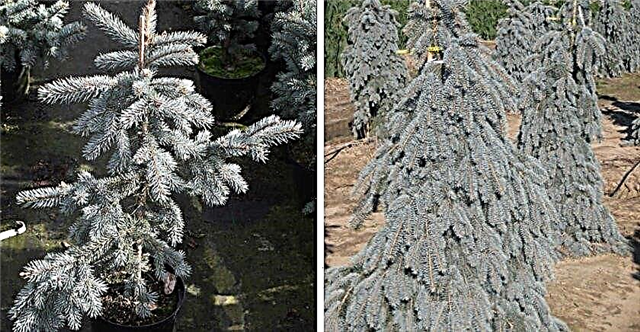
- Prickly spruce The Blues Pendula. Low-growing culture, characterized by a particularly beautiful appearance. The height of an adult tree does not exceed 3 m, and the needles are painted in a rich silver-blue color. The needles are magnificent and sharp, but with a lack of sunlight it quickly becomes faded. The branches are drooping, so they need a garter.

Use in landscape design
The unusual shape of the crown and the bright color of the needles make it possible to use the Glauka Pendula spruce in the landscape design of the garden plot.
Did you know? The oldest spruce in the world grows in the territory of the Fulufjellet National Park in Sweden. The age of the tree is more than 9550 years.
The tree can be used:
- for single plantings in a small garden;
- as an unusual element growing on a flower bed or lawn;
- as a groundcover (when grown without tying);
- to create figures of various shapes and sizes (provided that the tree is correctly formed);
- as an accent tree as a part of group compositions from deciduous, coniferous and flower plants;
- to create hedges around the perimeter of the site.

Landing
Spruce of this variety is recommended to be planted in spring or autumn. When choosing specific dates, it is necessary to take into account the climatic conditions of the growing region, so that the young trees have time to take root before the cold. In the northern regions, seedlings are placed on the site in the spring, and in the southern regions in early autumn. The planting procedure is not particularly difficult, but for the successful rooting of the tree, you need to choose a suitable place and properly prepare the landing pit. The success of growing Pendula on the site also largely depends on the quality of the seedling.
Did you know? In the village of Ruch (Ust-Kulomsky District, Komi Republic), an interesting spruce grows, the crown of which consists of three separate Christmas trees. This tree is over a hundred years old.
Seedling Selection
For planting, it is recommended to choose only healthy and strong seedlings, i.e. poor-quality planting material will not be able to take root even in a site with ideal conditions for growth. It is best to buy young Glauka Pendula in a specialized store or nursery.
When choosing a tree for planting, pay attention to such signs:
- the vaccination site should not be damaged - if it is affected by diseases or pests, the seedling will quickly dry out;
- the roots should be inside a special container or bag of burlap filled with earth - the open root system dries quickly from a lack of moisture;
- the earthen lump around the roots of the seedling should be moderately moist;
- the needles on the branches should have a rich bluish color, without yellowness - if the edges of the needles are yellowed, this indicates a drying tree.

Preparing the landing site
Pendula spruce is unpretentious to environmental conditions, but grows best in areas that meet certain requirements.
Important! A seedling pit for a seedling should begin to be prepared in about 2 weeks. During this time, the earth in it will have time to settle and mix with fertilizers.
A place for planting a tree must meet the following criteria:
- have loose soil with an acidic or slightly acidic reaction;
- to be in the sun (even in a small penumbra, the needles quickly lose their bright color);
- do not contain groundwater, lying close to the surface of the earth.

The process of preparing the landing pit consists of the following stages:
- Dig a hole with a depth of about 70 cm. Its width should be approximately 2 times greater than the root system of a young seedling.
- Put a layer of broken brick or coarse sand up to 20 cm thick at the bottom of the recess.
- Prepare a fertile substrate, mixing in equal proportions leaf humus, peat, turf land and sand. Add 100 g nitroammophoski to each pit.
- Pour the obtained nutrient mixture on top of the drainage layer in the pit.
- It is good to water the recess with water and leave it in this form until planting.

Landing rules
The key rule for planting Pendula spruce is the correct incorporation of seedling roots into the ground. But even a novice gardener can cope with this procedure.
Important! If several Glauka Pendula fir trees are planted on the garden plot, then the distance between adjacent trees should be at least 3 m.
Step-by-step tree planting algorithm:
- Remove parts of the nutrient substrate from the previously prepared landing pit. From the remaining at the bottom of the deepening of the earth to form a small hill.
- Lower the roots of the seedling in the pit, placing the trunk in the center. The root neck should be slightly above the surface of the soil.
- Sprinkle the roots with the remaining nutrient substrate, ramming it in the pit to eliminate voids.
- Form around the trunk a small rim about 10 cm high, limiting the area of the trunk circle.
- Pour the seedling with water so that the liquid reaches the edges of the side.
- After the water is absorbed, mulch the trunk circle with acid peat or dry pine bark.

Care
Even a novice gardener can take care of Glauka Pendula spruce after planting, but at the same time certain rules must be observed to prevent damage to the vaccination site. A tree does not require specific conditions for growth, therefore, it is enough to just monitor the moisture and soil condition around the seedling, as well as periodically feed and properly prepare the fir tree for the onset of cold weather. To give Pendula's crown a beautiful shape, it is recommended that you pay attention to shaping the tree by trimming.
Watering and feeding
Glauka Pendula is relatively resistant to drought, but in the absence of rain for a long time, it must be watered. With a prolonged lack of moisture, the branches lose their elasticity, and the tree becomes more susceptible to diseases and pests. Pendula responds well to top dressing, which is recommended to be applied in spring and autumn.
Important! To protect the spruce from diseases and pests, it is necessary to carry out preventive treatment of the crown with the Epin and Zircon preparations. The procedure is carried out in spring and autumn.
The basic rules for watering and fertilizing a tree are listed below:
- young seedlings are watered as the soil dries, spending 7-10 liters of water for each instance;
- after rooting, the tree is irrigated every 7-10 days (in hot weather and in the absence of rain), using at least 10 liters of water per spruce;
- adult trees during a long summer drought are watered once a week, and the amount of water is determined depending on the height of Pendula (10 l per meter);
- for an attractive color of needles in summer it is recommended to sprinkle every 7-10 days;
- In spring, Glauka Pendula needs nitrogen, and in the fall - in potassium and phosphorus, so at this time the tree needs to be fed with standard fertilizers for coniferous crops containing the appropriate nutrients.

Mulching and loosening the soil
Part of the root system of the Glauka Pendula spruce is very close to the soil surface, so frequent loosening of the soil in the region of the near-trunk circle is undesirable. This procedure is carried out mainly for young seedlings that do not tolerate compaction of the earth. The soil around them is periodically loosened to a depth of 5 cm.For adult trees, the trunk circle is mulched - the ground is sprinkled with peat or dried pine bark.
Mulching has a beneficial effect on Pendula:
- increases soil acidity;
- prevents overheating of the root system;
- holds moisture well in the soil;
- prevents the emergence of weeds.

Trimming and Shaping
The crown of the spruce Glauka Pendula bends to the ground as it grows and looks wilted. You can leave the tree in such a way that it becomes like a bush of an unusual shape. But if the gardener wants to give the fir a certain appearance or make any shape out of it, then the tree needs to be formed. Glauka Pendula tolerates pruning well, so you can make any bizarre shape out of it. All branches are cut with a sharp knife or secateurs. Before the onset of cold weather, the places of cuts should be completely tightened.
Did you know? The main root of the spruce, which goes deep into the soil, dies after the tree reaches the age of 15 years. Instead, many small roots appear horizontally near the surface of the soil.
The procedure for trimming and forming a tree has the following features:
- at the end of summer, damaged and dried shoots are removed;
- at the end of spring, pinch extra young shoots, giving the crown the desired shape;
- to regulate the height of the tree, its central branch (conductor) is tied to a support at a desired distance from the ground;
- the crown located above the point of attachment to the support begins to lean toward the ground - it is bent in the right direction, fixing if necessary with small additional supports;
- in order to give the young branches of the tree the desired bend, they are fixed in a certain position with the help of stakes and ropes driven into the ground - in a year the shoots will become lignified, they will take the right position, and the fastenings can be removed.
 a-first year (immediately after planting); b-second year; third year
a-first year (immediately after planting); b-second year; third yearWinter preparations
Glauka Pendula is highly frost-resistant and can withstand temperatures up to -34 ° C without shelter. But young trees during the first two years of life need additional protection for the winter.
Did you know? Spruce is often used to make musical instruments. Due to the uniform distribution of wood fibers, finished products have a particularly clear sound.
The main recommendations for preparing for wintering are listed below:
- seedlings at the age of 1-2 years with the onset of frost completely wrap non-woven material, fixing it with a rope;
- in adult trees, the grafting site is wrapped in two layers of non-woven fabric when cooling to -20 ° C;
- in the middle of autumn, water-charging irrigation is carried out, which helps to strengthen the roots before the cold - the earth around the trunk should get wet well to a depth of several meters;
- to protect the root system from freezing, the area of the trunk circle at the end of autumn is covered with a thick layer of acid peat.

Spruce Glauka Pendula can be an excellent decoration for any garden plot, and you can grow it even in regions with a cold climate. Using the information presented in the article, each gardener will be able to choose for himself the most suitable form of this coniferous tree and plant it independently, giving the branches and crown the desired appearance.





